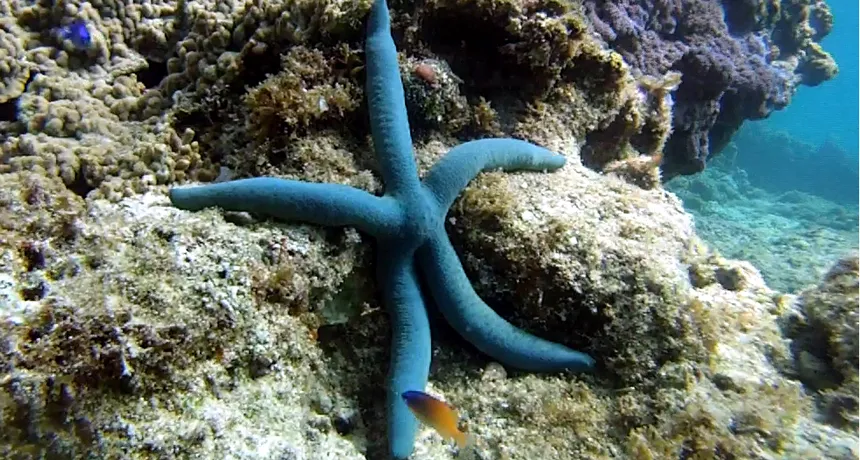Finally, evidence that a starfish’s eyes let it see

Linckia laevigata, a tropical species of sea star from the Indian and Pacific Oceans, can see with tiny eyes on the tip of each arm.
© Anders Lydik Garm
- More than 2 years ago
If you’ve ever picked up a starfish — or sea star, as they’re more properly called — you probably didn’t notice the eyes. At the tip of each arm sits a tiny compound eye composed of ommatidia, which are clusters of photoreceptor cells. Though the existence of the eyes has been known for about 200 years, scientists weren’t sure whether sea stars could actually see with them.
But now a slightly gruesome experiment has shown that, yes, starfish can see, though not particularly well. Anders Garm of the University of Copenhagen and Dan-Eric Nilsson of Lund University in Sweden report their findings January 7 in the Proceedings of the Royal Society B.
Before the researchers could test the starfish’s sight, they needed a better sense of what might be possible with that sight. So they started by examining Linckia laevigata sea stars that they picked up at an aquarium store in Copenhagen. Like other starfish species, L. laevigata’s eyes sit at the tip of each arm, and the animals would have to bend their arms up 80 to 120 degrees to see anything but the sea floor. The eye itself is situated at the end of a tube foot and holds around 150 to 200 ommatidia, each of which has around 120 photoreceptors.
The view from each of these five eyes overlaps with its neighbors, so a starfish should be able to see all of its surroundings at once. However, because the eyes are packed in with the animal’s other tube feet, a sea star might not actually be able to take advantage of that 360-degree view. The eyes are further hampered by their low spatial resolution, the researchers say. That low-res vision is similar to other animals that have limited brain power, but it means that starfish can only detect large structures in their environment, such as a coral reef.
Measures of the ommatidia’s electrical responses showed that the starfish are color-blind but see really well around the light wavelength of 450 nanometers. That’s the same wavelength as clear ocean water viewed horizontally or up toward the surface. “This means that the open ocean will appear bright to a starfish,” the researchers write. “But the coral reef appears dark, because light reflected from it mostly contains the longer wavelength part of the spectrum.”
Because the L. laevigata eye appears suited for spotting the sea star’s home — a coral reef — the researchers’ next step was to see if the animals could find their way there if they didn’t have eyes. So here comes the gruesome part: They went to a reef in Japan where the sea stars live and used a pair of scissors to cut off the eyes on five of them, along with a couple of tube feet and ossicles. And as a control, the scientists did a sham operation on five more starfish that removed tube feet and ossicles only. (This seems really mean, I know, but starfish can grow back whole arms, so it’s not quite as bad as it sounds.)
After letting the animals heal overnight, the researchers placed the starfish about a meter away from a reef and watched as the sea stars began to move slowly. Nearly all of the sham-operated starfish made a beeline for the reef, but the eyeless sea stars just wandered. Similarly, intact starfish left a meter from the reef on a moonless night also failed to find their way home.
This visually guided behavior only works at relatively short distances from the reef, the researchers note. At 4 meters way, sea stars couldn’t find their home. “We suggest that the importance of the behaviour is not primarily to see new reefs, or to handle major displacements from the reef, but rather to ensure that they do not move away from the reef,” they write.
Sea stars may not have great vision, but scientists have finally proved that not only can sea stars see, but also that the animals have just the right kind of vision for where they live.





